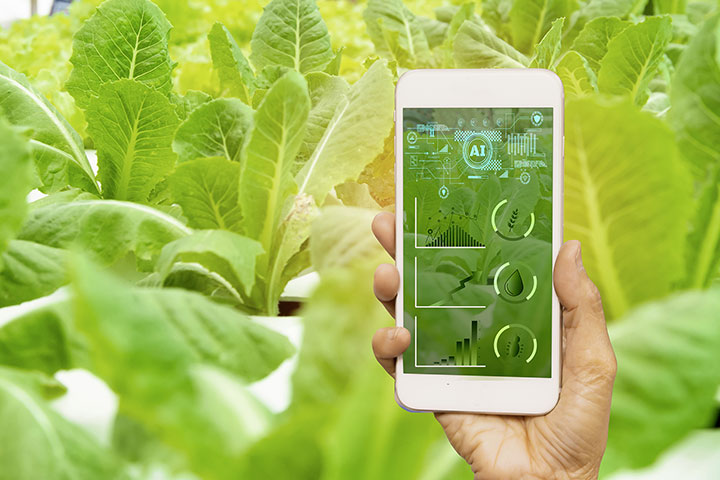
IoT can solve big problems around the world but first, it needs to connect around the world.
Constellations spoke with Jaume Sanpera, Co-founder and CEO of Sateliot, about the evolution of LEO constellations and the use of 5G-enabled nanosatellites to extend IoT coverage around the planet, opening up new possibilities in agriculture, transportation, safety and more.
IoT, or the Internet of things, uses low-cost sensors and devices to track, monitor and notify, with applications that can range from protecting perishables and enabling precision farming to locating livestock or people lost at sea.
The problem, Sanpera said, is that 85% of the world is not covered by mobile operators, which limits IoT’s reach and potential.
Sanpera said his company is the first to operate a constellation of nanosatellites based on the 5G standard that will bridge the gap with mobile network operators to extend IoT coverage everywhere.
The 5G Footprint
There are billions of IoT devices and one of the most common IoT protocols used in telecom is NB-IoT or narrowband IoT. Referred to as “5G IoT,” it is a standard used by mobile operators around the world.
“What we have done is taken these 5G IoT devices that are super cheap and make them connectable with our satellites,” Sanpera told Constellations.
He continued that mobile network operators (MNOs) can essentially use 5G cell towers in space to extend their 5G IoT cell coverage to anywhere.
Making the Business Case
The business model is based on a nanosatellite constellation that is specialized to do just one thing: NB-IoT, and nothing more. On the hardware side, Sateliot leverages COTS subsystems and components that have been developed and proven in space for cubesats, which reduces costs and the need to design from scratch.
On the software side, 5G provides a big breakthrough, standardizing the software connection to satellites. Sanpera said they worked with 3GPP, the mobile standards body, for over three years to integrate satellite.
Once Release 17 of the 5G standard was issued in June 2022, the devices using that release were able to connect seamlessly, he claimed.
5G IoT Scale
Instead of needing a “super expensive” proprietary device costing hundreds of dollars to connect to satellite, inside the mobile world, a 5G IoT device costs you “$5 or $10, not more,” Sanpera said.
There are hundreds of companies manufacturing 5G IoT devices for different applications that are the same, which offers “incredible economies of scale” for all different 5G IoT use cases, he continued.
That same unmodified $5 IoT device will connect seamlessly with a telecom base station inside the city and with satellite outside of it.
Sanpera said it doesn’t make sense to use satellite in a city where terrestrial coverage already exists. “We are just an extension of the coverage of the mobile operators.”
By connecting their constellation to the 5G core that mobile operators use, no integration is needed. MNOs such as Verizon, Claro, Telefonica, or KDDI in Japan, can extend their coverage simply through a roaming agreement, he explained.
That will allow an NB-IoT device that is deployed outside of cellular infrastructure to switch seamlessly from terrestrial to non-terrestrial 5G.

A World of 5G IoT Applications
Because it takes each nanosatellite 90 minutes to complete an orbit around the Earth, multiple satellites are needed to provide near-constant coverage. Once several of Sateliot’s satellites are operational next year, Sanpera said they’ll be able to send five to 10 messages daily anywhere on Earth.
That will limit their initial focus to applications that require fewer messages, such as agriculture, infrastructure or cattle management.
‘Til the Cows Come Home
In countries like Brazil that are heavily agricultural, there are millions of cattle “in the middle of nowhere,” with no way to know if they are sick or in need of care, Sanpera noted. A small, inexpensive device can detect whether a cow is pregnant, sick, not moving or if it goes beyond a virtual fence.
According to Sanpera, one program reduced the illness and death in cows by 20%, which can have an “incredible” impact on a nation’s GDP.
As Sateliot scales to more frequent messages—around one per hour—it will open up applications like logistics, where millions of packages and shipping containers need to be tracked around the globe.
Some companies lose thousands of containers each year that are stuck somewhere beyond coverage. Others have millions of refrigerated containers with perishables that need to be controlled for temperature and humidity.
Sanpera said Sateliot is working with a company that prints an NB-IoT, 5G IoT chipset so as to track a box anywhere in the world.
Infinite Possibilities
Beyond commerce, 5G IoT can also help tackle challenges in the environment, the energy grid, even endangered species. Sanpera said they are working with NGOs, including one in Africa that uses Wi-Fi tracking to protect white rhinos, and another in Brazil to help prevent wildfires and deforestation.
Then there is personal safety. He said that anyone who would have no way to ask for help if injured in a remote area will want “one of these small super cheap devices.” One company that manufactures millions of life preservers is reportedly interested in putting a sensor in each jacket because too many people die from exposure by not being geolocated in time.
Before long, there will be more IoT devices on the planet than humans. According to one forecast, within five years there will be five to 10 IoT devices per person, adding billions more.
The key point, Sanpera said, is that 5G IoT has to be super-scalable and fully seamless for the user. Once people realize what they can do with a $5 tracker or sensor, then the imagination is unlimited.
To hear more about the future of IoT applications, the advantages of operating in low earth orbit, and how 5G is enabling satellite-telecom integration, click here.
Explore More:
John Deere Assesses Bids after RFP to Satellite IoT Providers
Podcast: Industrial IoT, Cubesat Constellations and Getting VSATs to Work with LEO
Wiper Malware: An Increasing Threat to Satellite and IoT-Enabled Capabilities
Satellite IoT Opportunities: Drilling into Oil and Gas
